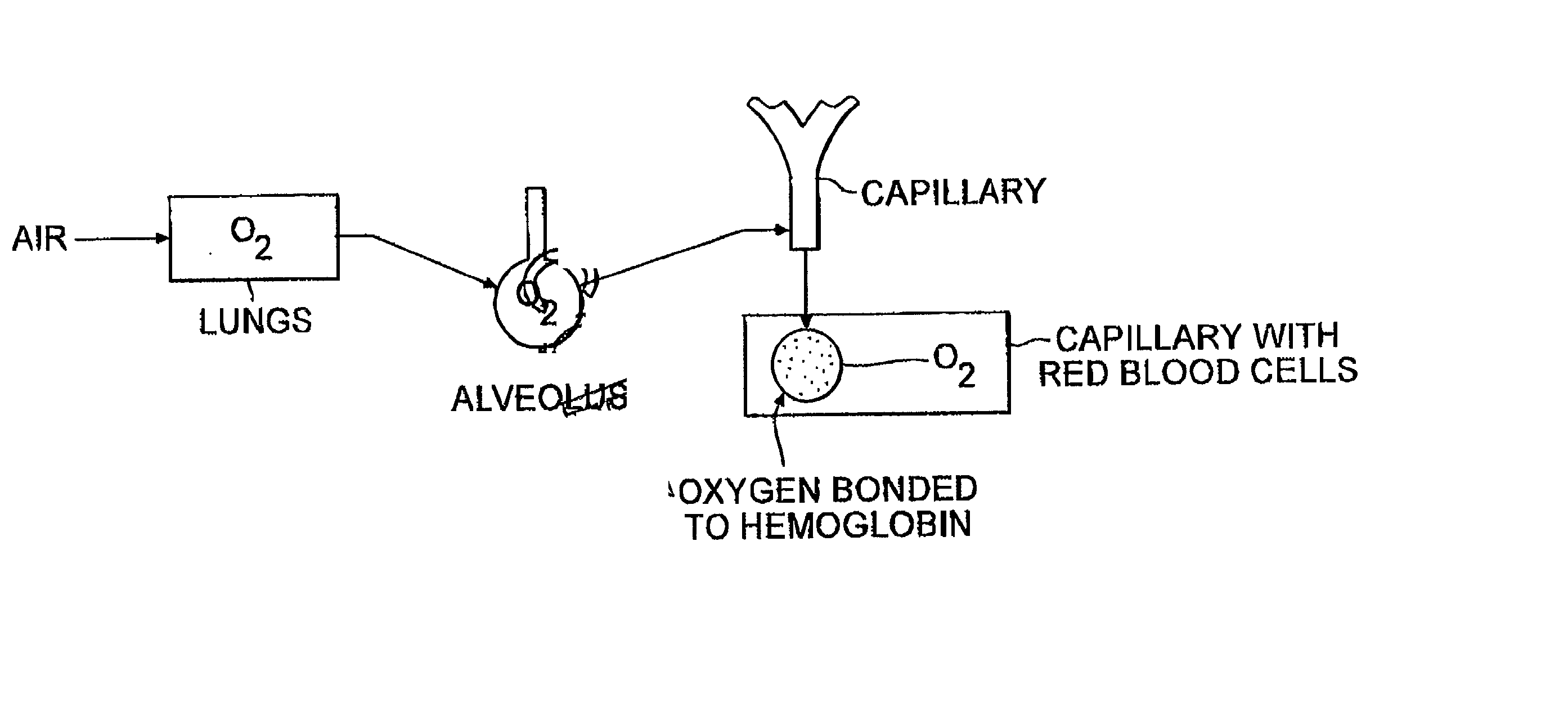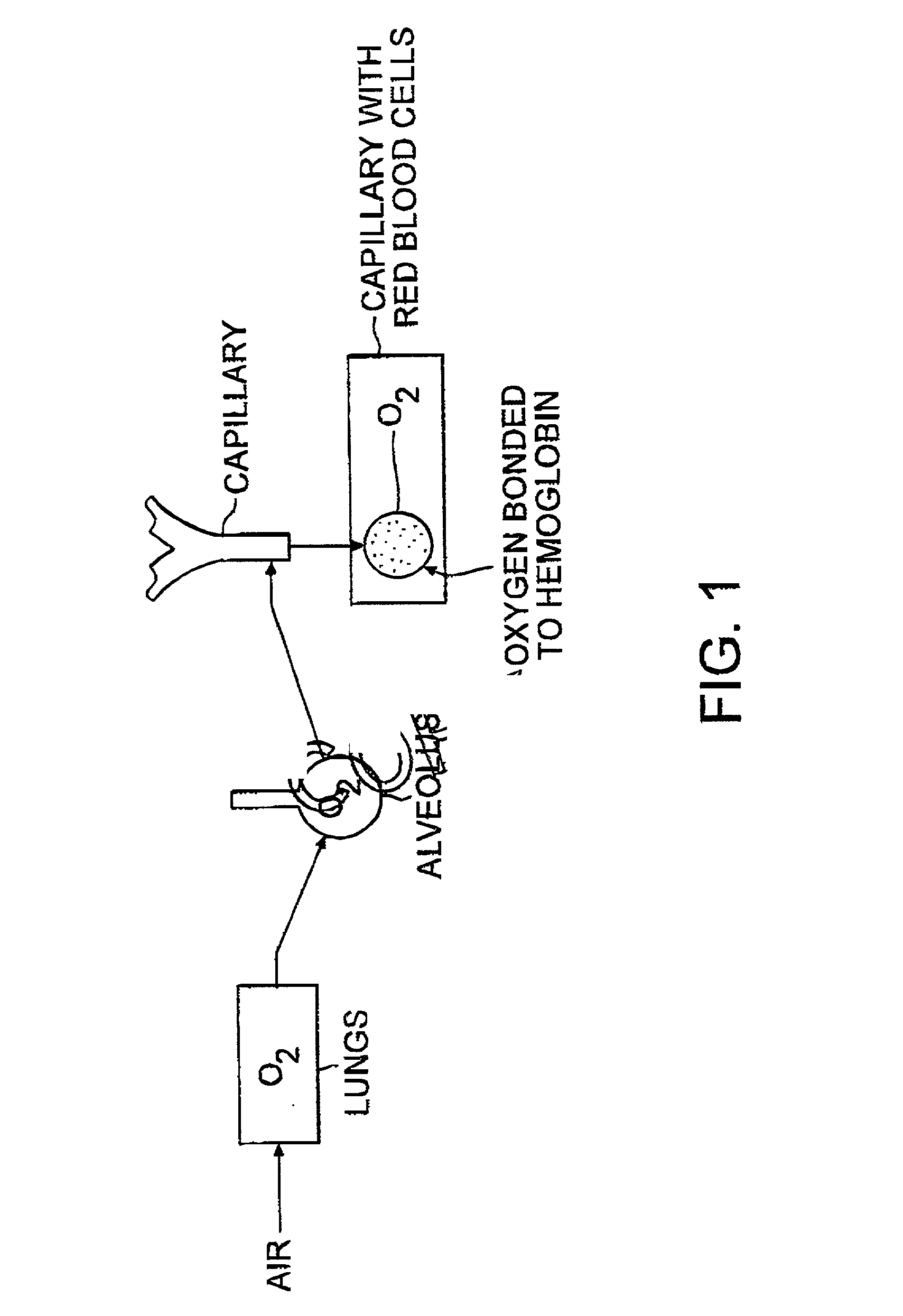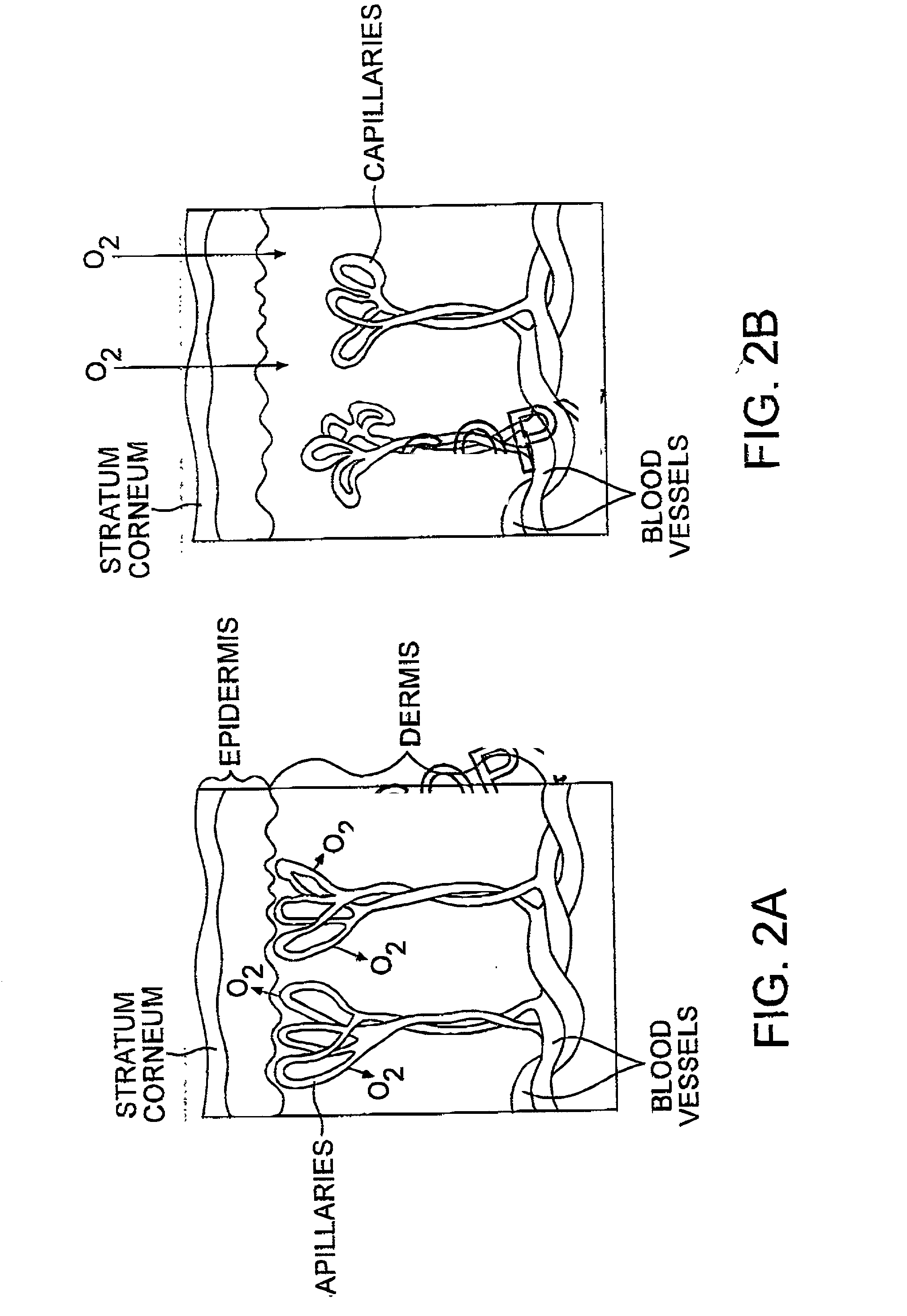Compositions and method of tissue superoxygenation
- Summary
- Abstract
- Description
- Claims
- Application Information
AI Technical Summary
Benefits of technology
Problems solved by technology
Method used
Image
Examples
example 1
5.1 Example 1
Increase in Subcutaneous Oxygen in Porcine Skin
[0074] This example demonstrates that a solution containing superoxygenated microbubbles, applied topically to the skin of a pig, increases the level of oxygen in the underlying subcutaneous tissue.
[0075] The skin was cleaned with alcohol, hydrogen peroxide and then water. Arterial blood gas monitoring devices ("sensors") capable of simultaneous measurement of partial pressure of carbon dioxide (pCO.sub.2), temperature and pH were inserted 1-4 mm beneath the skin surface, on the left and right sides of the body. Containers for test solutions, such as flexible bags with tubes at one end, were affixed with adhesive to the skin surrounding the sensor. The containers provided a means of immersing the skin under a column of test or control solution during the test. Prior to filling the containers, controls established that the choice of adhesive (Fixodent.RTM. or Stromahesive paste) had no effect on the baseline pO.sub.2 reading...
example 2
5.2 Example 2
Increase in Subcutaneous Oxygenation in Human Subjects
[0081] Results from procedures with human subjects demonstrated that oxygen in superoxygenated solutions prepared as described can be delivered to subcutaneous tissue through healthy human skin to increase subcutaneous pO.sub.2 above baseline levels.
[0082] After receiving informed consent from ten human subjects, baseline blood pressure and heart rate were measured. A pulse oximeter probe was placed on the subject's finger for continuous monitoring of heart rate and oxygen saturation throughout the study. The skin over the outside of the left calf was disinfected with betadine and the betadine cleaned from the surface of the skin. A catheter (22 Ga, 1-3 / 8" catheter, Product No. 04122, Arrow) was surgically inserted in under the surface of the skin and then out, so the tip of the needle and catheter were exposed and almost the entire length of the catheter was in the subcutaneous space. The catheter was placed as clos...
example 3
5.3 Example 3
Application of Method of Tissue Superoxygenation to Wound Healing
[0101] Preliminary studies will be conducted in diabetic patients and compared to those performed in animal and normal human testing to determine the effect of superoxygenated microbubbles on the rate of healing when administered to the non-healing wounds of diabetic patients. Patients will be maintained under tightly-controlled environmental conditions. Additionally, the wound area will be analyzed and anaerobic bacteria identified according to studies performed at the Institute of Molecular Biology and Medicine at University of Scranton. According to that study, approximately 10-20% of diabetic foot wounds fail initial antibiotic treatment. It is generally believed that several bacterial species may be present in these types of wounds. Because some of these organisms cannot be easily cultured, proper identification is problematic and thus, appropriate treatment modalities cannot be applied. The report ex...
PUM
| Property | Measurement | Unit |
|---|---|---|
| Fraction | aaaaa | aaaaa |
| Fraction | aaaaa | aaaaa |
| Angle | aaaaa | aaaaa |
Abstract
Description
Claims
Application Information
 Login to View More
Login to View More - R&D
- Intellectual Property
- Life Sciences
- Materials
- Tech Scout
- Unparalleled Data Quality
- Higher Quality Content
- 60% Fewer Hallucinations
Browse by: Latest US Patents, China's latest patents, Technical Efficacy Thesaurus, Application Domain, Technology Topic, Popular Technical Reports.
© 2025 PatSnap. All rights reserved.Legal|Privacy policy|Modern Slavery Act Transparency Statement|Sitemap|About US| Contact US: help@patsnap.com



